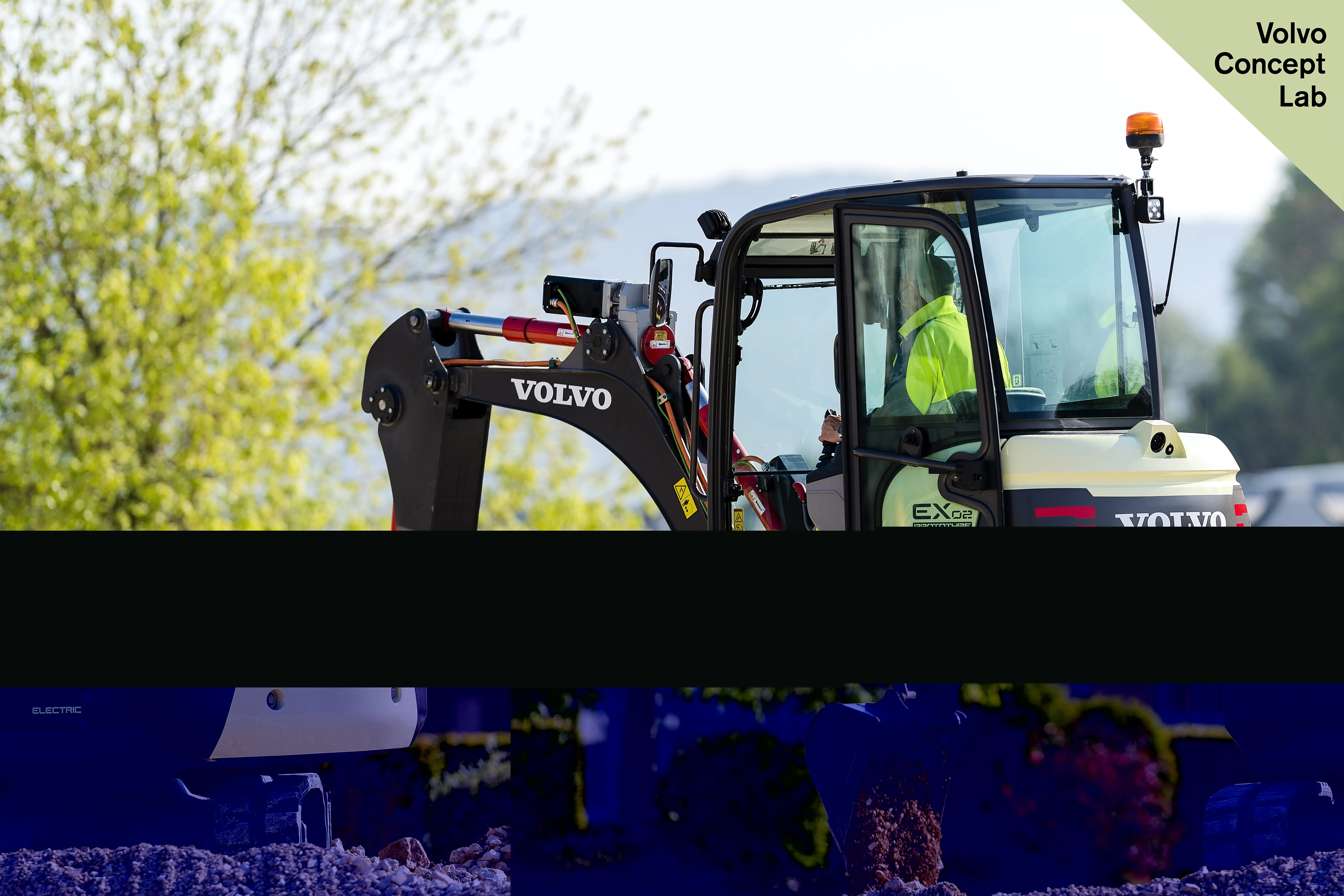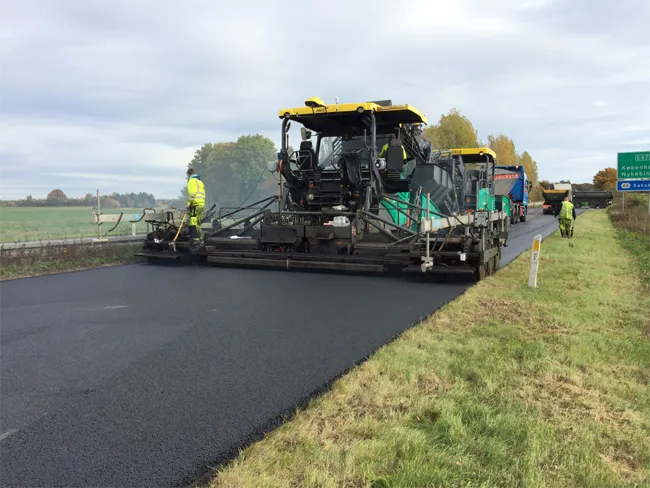
What will tomorrow’s roads look like? Will lanes be narrower, will the road charge vehicles as they drive on them, will they collect data, will they be self-cleaning and de-polluting? All these questions and more were pondered at a two-day conference in Berlin, entitled ‘Preparing the asphalt industry for the future’. It was the first such event for
“We are seeing a lot of change in the market and the working environment,” said Siobhan Mckelvey, Eurobitume president and chair of the organising committee for the event. “And we need to be more open and connected to a wider part of our audience.”
There are two big and interdependent challenges for the European asphalt industry. The sector must understand and work with the opportunities and threats that the digital age brings, while attracting new talent.
“We are facing a great revolution,” said Guillaume Bastien, commercial and business development director for
Fewer car owners
One of the difficulties in preparing for the future is that no one knows what the future will look like. Bastien made the point that vehicle manufacturers are pushing forward without any involvement with, or interest in, the asphalt industry. As a result, road researchers are looking at a number of ‘what if’ scenarios.
Nicolas Hautiere, deputy director of IFFSTAR, the French Institute of Science and Technology for Transport, Development and Networks, spoke about the I-Street programme which will see over €15 million invested in a series of demonstration projects in Nantes, Toulouse, Lyon and Champs-sur-Marne. Subjects under investigation include greener roads, instrumented and connected roads, prefabricated and removable roads and new markings.
Despite the uncertainty, one trend is widely predicted: car ownership will decrease. Arash Khojinian, pavement materials team leader at
There are implications for a future where people pay to use vehicles as required, rather than owning them. Gergely Raccuja, a strategic consultant at
Raccuja, who won the 2017 Wolfson Economic Prize with his idea, ‘Miles Better’, suggests that tax should be applied to individual vehicles and should reflect the distance each vehicle drives. Price/distance will depend on the weight and polluting power of a vehicle.
“With shared vehicles, there may be a lot less vehicles driving more miles, so it’s important that we look at that and that we reinvest based on that,” Raccuja told the conference. He also pointed out that, with a switch to electric and hybrid vehicles, taxes levied on fuel will reduce.
Raccuja’s scheme, developed in conjunction with motoring organisation the
Miles Better also requires that money from the taxes collected is ring-fenced for road repair. “It should be guaranteed that a proportion of my taxes will be reinvested into road maintenance,” said Raccuja.
Raccuja was speaking in a section of the conference that looked at financing solutions for roads, alongside Thomas Bayerl, who runs the infrastructure debt team for the asset management part of insurer Munich Re. Bayerl told the conference how attractive the infrastructure sector is for insurance companies.
“We like infrastructure project finance because it gives us predictable and stable cash flows,” he said. “Institutional investors are still fairly new to this topic. What we try to do is work in partnerships with market participants in order to develop our portfolio further and match our liabilities better.”
In the sustainability session, the conference heard from a transport researcher about reducing the carbon dioxide produced by freight vehicles. Tim Breemersch, senior researcher at Transport & Mobility Leuven in Belgium explained that the issue must be tackled on multiple fronts simultaneously: improving energy efficiency, better aerodynamics, lower rolling resistance, better hybrid and electrification technology and improved logistics.
Bjarne Schmidt, a senior consultant at Teknologisk Intitut in Denmark, spoke about ongoing research to improve the rolling resistance of pavements, including finding more effective ways to measure rolling resistance.
Mats Wendel, innovation strategist at
Reinhold Ruhl, chair of the German Bitumen Forum, spoke about the challenges of setting up a programme of medical checks on road workers, which the forum is doing in order to set reasonable OELs. Cosmin Patrascu of INRS, the French National Research and Safety Institute for the Prevention of Occupational Accidents and Diseases spoke about a project to create standards related to inhaling fumes from asphalt mixes and contact with skin.
David Giles, representing Eurobitume UK, talked about a scheme which has been running since 2003 where drivers of bitumen tankers report accidents or problems with bitumen storage and dispensing equipment. Through analysis of the data, Eurobitume and the
Leopold Tzeuton, general manager of ATPH, the French Association for Prevention in Hydrocarbon Transport presented about his organisation’s training track for tank truck drivers, the only one in Europe.
Why aren’t we innovating?
A challenging session looked at the topic of new technology and asked why the road building industry is not adopting it more readily. There were a few different reasons proposed by various speakers.
Rudi Bull-Wasser, head of section, asphalt pavements at Germany’s Federal Highway Research Institute was speaking from the client’s perspective. He highlighted challenges due to clients being risk-averse and a culture where failures are not accepted and a lowest-price-wins procurement environment.
Sergei Miller, asphalt researcher at TU-Twente in the Netherlands, said that the industry has the knowledge and tools needed to improve quality: ensuring temperature homogeneity and compaction consistency.
“The asphalt industry mainly operates based on condition and custom,” he said. “That’s quite dangerous in terms of blocking innovation.” Miller recounted that he visits many construction sites and often observes that technology such as intelligent compaction systems are switched off.
However, the technology is out there. Miller believes that savvy contractors can benefit from off-the-shelf solutions such as infrared cameras that would allow them to do a better job. “Off-the-shelf systems are going to be challenging the machine manufacturers,” he predicted.
Another barrier to innovation is the demographics of the road industry. Like the construction industry in general, road building firms and suppliers in Europe and around the world are struggling to attract new talent, with many young people being drawn to high-tech industries.
How to attract new recruits presents another challenge. The conference is part of E&E’s strategy, because it aims to help the industry to communicate the value it brings to society and the environment, rather than just focussing on technical issues and research.
As Gergeley Raccuja’s presentation demonstrated – he graduated in 2015 - younger people do come up with alternative ideas. The challenge for established players is to be open to new ideas, rather than to immediately knock them down.









